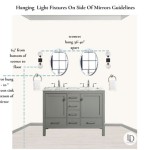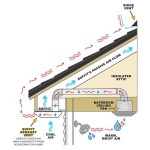Bowl Type Bathroom Sinks: A Comprehensive Guide
Bowl type bathroom sinks, also frequently referred to as vessel sinks, have gained considerable popularity in modern bathroom design. Their distinctive aesthetic, coupled with a range of functional benefits, makes them a compelling choice for homeowners and interior designers alike. This article provides a detailed exploration of bowl type bathroom sinks, covering their various types, materials, installation considerations, advantages, disadvantages, and maintenance requirements.
Types of Bowl Type Bathroom Sinks
Bowl type bathroom sinks are not a monolithic category. Variations exist in shape, mounting style, and overall design. Understanding these different types is crucial for selecting the most appropriate sink for a specific bathroom setup.
Above-Counter Sinks: This is perhaps the most common type of bowl sink. As the name suggests, these sinks sit entirely above the countertop. This creates a dramatic visual impact and often showcases the material and design of the sink itself. Installation is generally straightforward, requiring only a hole for the drain. However, it’s important to consider the overall height, as the elevated sink can make it less accessible for children or individuals with mobility limitations. Faucet selection also becomes critical, often requiring a taller faucet or a wall-mounted faucet to reach the sink effectively.
Semi-Recessed Sinks: These sinks offer a hybrid approach, partially recessed into the countertop while still displaying a significant portion of the bowl above. This can provide a balance between the visual appeal of an above-counter sink and the practicality of a recessed sink. Installation requires more precise cutting of the countertop, and careful consideration must be given to the height and depth of the sink in relation to the counter.
Under-Counter Sinks: While technically a 'bowl' can be used, under-counter sinks are less commonly associated with the term "bowl type." These sinks are installed beneath the countertop, creating a seamless and clean look. The entire rim of the sink is hidden from view, making it easy to wipe down the countertop directly into the sink. This option is particularly well-suited for bathrooms where ease of cleaning and a minimalist aesthetic are prioritized. Installation requires secure mounting brackets to support the weight of the sink, and precise countertop cutting is essential.
Integrated Sinks: These sinks are molded directly into the countertop, creating a single, unified piece. This design eliminates seams and crevices, making them exceptionally hygienic and easy to maintain. Integrated sinks are often found in modern and contemporary bathroom designs, offering a sleek and sophisticated look.
Materials Used in Bowl Type Bathroom Sinks
The choice of material significantly impacts the appearance, durability, and maintenance requirements of a bowl type bathroom sink. A wide array of materials are available, each with its own unique characteristics.
Ceramic: Ceramic, including porcelain and fireclay, is a popular choice due to its durability, affordability, and wide range of design options. Ceramic sinks are resistant to stains, scratches, and heat, making them suitable for everyday use. They are also relatively easy to clean with common household cleaners. Porcelain is a specific type of ceramic that is fired at a higher temperature, resulting in a smoother and more non-porous surface. Fireclay is even more durable than porcelain, making it ideal for high-traffic bathrooms.
Glass: Glass vessel sinks offer a modern and artistic aesthetic. They are often made from tempered glass, which is more resistant to breakage than regular glass. Glass sinks can be clear, colored, or textured, offering a variety of design possibilities. However, glass sinks can be more susceptible to scratches and water spots, requiring more frequent cleaning and careful maintenance.
Stone: Natural stone sinks, such as granite, marble, and travertine, provide a luxurious and organic look. Each stone sink is unique, with variations in color and veining. Stone sinks are durable and can add a touch of elegance to any bathroom. However, they are often more expensive than other materials and may require sealing to prevent staining and water damage. Marble, in particular, is porous and prone to etching from acidic substances.
Metal: Metal sinks, such as stainless steel, copper, and bronze, offer a sleek and industrial aesthetic. Stainless steel sinks are durable, rust-resistant, and easy to clean. Copper sinks have a natural antimicrobial property and develop a unique patina over time. Bronze sinks offer a warm and rustic look. Metal sinks can be susceptible to dents and scratches, especially if they are made from thinner gauges of metal.
Concrete: Concrete sinks are becoming increasingly popular for their modern and industrial appeal. They can be custom-made in a variety of shapes and colors. Concrete sinks are durable but require sealing to prevent staining and water damage. They can also be quite heavy, requiring a sturdy countertop and support structure.
Composite Materials: This category encompasses a wide variety of materials, often blending natural stone or minerals with resins. These composites can offer the look of natural stone with improved durability, stain resistance, and a lighter weight. Examples include quartz composite and solid surface materials.
Installation Considerations for Bowl Type Bathroom Sinks
Proper installation is critical for the functionality and longevity of a bowl type bathroom sink. The installation process varies depending on the type of sink and the existing plumbing.
Countertop Preparation: The countertop must be properly prepared to accommodate the sink. This includes cutting the appropriate size hole for the drain and ensuring that the countertop is level and sturdy enough to support the weight of the sink. For under-counter sinks, precise cutting and secure mounting brackets are essential.
Plumbing Connections: The drain assembly must be properly connected to the existing plumbing. This includes connecting the drain to the P-trap and ensuring that all connections are watertight. The faucet must also be properly connected to the water supply lines. Consideration should be given to the height of the faucet in relation to the sink to prevent splashing and ensure ease of use.
Sealing and Caulking: Sealing and caulking are essential to prevent water damage and mold growth. The rim of the sink should be sealed to the countertop with a waterproof sealant. All plumbing connections should be caulked to prevent leaks. Regular inspection and re-caulking may be necessary over time.
Faucet Selection: Faucet selection is crucial for bowl type sinks, particularly above-counter models. The faucet should be tall enough to reach over the rim of the sink and provide adequate water flow. Wall-mounted faucets are also a popular option for above-counter sinks, offering a clean and modern look. The style and finish of the faucet should complement the sink and the overall bathroom design.
Advantages of Bowl Type Bathroom Sinks
Bowl type bathroom sinks offer several advantages that contribute to their popularity.
Aesthetic Appeal: Bowl sinks add a touch of elegance and sophistication to any bathroom. Their unique design and wide range of material options allow for a personalized and stylish look. Above-counter sinks, in particular, can serve as a focal point in the bathroom.
Design Flexibility: Bowl sinks are available in a wide variety of shapes, sizes, and materials, allowing for design flexibility. They can be paired with a variety of countertop materials and faucet styles to create a cohesive and stylish look.
Ease of Installation (for certain types): Above-counter sinks are relatively easy to install, requiring only a hole for the drain. This can make them a good option for DIY projects or bathroom renovations.
Increased Counter Space: By sitting on top of the counter, bowl sinks can free up more storage space underneath the vanity. This can be particularly beneficial in small bathrooms where space is limited.
Disadvantages of Bowl Type Bathroom Sinks
While bowl type sinks offer numerous benefits, it’s important to acknowledge their potential drawbacks.
Height Considerations: Above-counter sinks can be too high for some users, particularly children and individuals with mobility limitations. The combined height of the vanity and the sink can make it difficult to reach the faucet and use the sink comfortably. Careful consideration should be given to the height of the sink in relation to the user's needs.
Cleaning Challenges: The area around the base of the sink can be difficult to clean, especially with above-counter models. Water and debris can accumulate in this area, requiring more frequent cleaning. Some materials, such as glass and stone, may require special cleaning products to prevent staining and water spots.
Potential for Splashing: The shallow depth of some bowl sinks can lead to splashing, especially with high-pressure faucets. Careful faucet selection and water flow control are essential to minimize splashing.
Cost: Some bowl type sinks, particularly those made from natural stone or specialty materials, can be more expensive than traditional sinks. The cost of installation can also be higher, especially for under-counter sinks or those requiring custom countertop cutting.
Maintenance and Care of Bowl Type Bathroom Sinks
Proper maintenance and care are essential to keep bowl type bathroom sinks looking their best and prevent damage.
Regular Cleaning: Clean the sink regularly with a mild soap and water solution. Avoid using abrasive cleaners or scouring pads, as these can scratch the surface. For specific materials, such as glass and stone, use cleaning products that are specifically designed for those surfaces.
Water Spot Removal: Water spots can be removed with a soft cloth and a vinegar-water solution. For stubborn water spots, use a commercial water spot remover that is safe for the sink material.
Sealing and Caulking Maintenance: Inspect the sealant and caulk around the sink regularly and reapply as needed. This will prevent water damage and mold growth. Use a waterproof sealant and caulk that is specifically designed for bathroom applications.
Preventative Measures: Avoid dropping heavy or sharp objects into the sink, as this can cause chips or cracks. Be careful when using harsh chemicals or cleaning products near the sink, as they can damage the surface. Wipe up spills immediately to prevent staining and water damage.

Types Of Bathroom Sinks The Home Depot

Bathroom Sink Bowls What Are The Diffe Types And Materials Badeloft

Designer White Round Solid Surface Stone Bathroom Ware Vessel Bowl Sink China Made In Com

Pros And Cons Of Bathroom Vessel Sinks Unique Vanities

Copper Wash Basin Sink Type Double Bowl

Orfeo Luxury Vessel Sink

Colorful Bathroom Round Bowl Ceramic Vessel Sink Counter Basin Set Mixer Faucet

Inart Ceramic Oval Shape Above Counter Top Wash Basin Bathroom Porcela

Fa Ceramic Vessel Sink Bathroom Vanity Bowl Beveled Round White Black Tap

Elecwish Square Tempered Glass Bathroom Vessel Sink Artistic Ocean Blue Washing Basin Bowl Oil Rubbed Broe Faucet Pop Up Drain Combo Com
Related Posts







